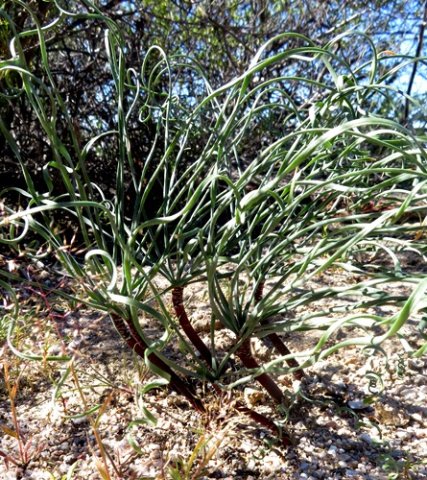Gethyllis ballerinas!

Author: Ivan Lätti
Photographer: Thabo Maphisa
This professionally choreographed troupe of leafy Gethyllis plants strike a ballet pose for the amusement or edification of local inhabitants of the lonely veld west of Springbok in Namaqualand.
Red-stemmed and sparsely leaved, they're appropriately attired, having to do this kind of thing many times before an aesthetic sense is kindled in mouse, tortoise or human.
Identifying the species of this unusual Amaryllidaceae plant from leaves alone would bring considerations of straight or spiralling leaves, linear or obovate leaf-shape, hairiness and width of blades and waviness of margins into play.
Perusing the stems will also help: Length, thickness, colour and the characteristic differences among the sheaths around stem bases of the species all contribute.
It may be easier to deal with flowers or fruit that usually appear at other times of the year. Rome is not understood in one season.
Gethyllis verticillata has straight or spiralling, thin leaves and long, thin stems covered in maroon blotches. G. latifolia has a long, thin neck, pink to brownish and longitudinally lined (purplish). Its spiralling leaves are wider. Wider leaves also characterise G. gregoriana that has a long thin neck sheathed below the leaves. G. britteniana has maroon spots on the sheath around the leaf bases.
It remains for those closer to the kukumakranka clan to get on first-name terms with these dancers (Duncan, et al, 2016; iNaturalist).

